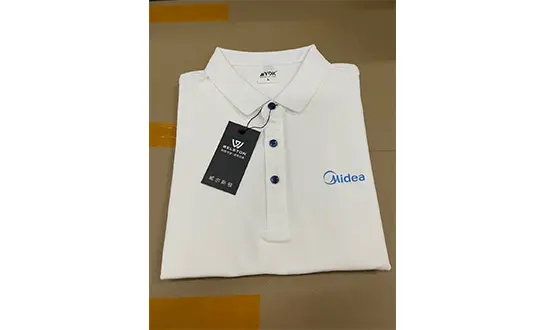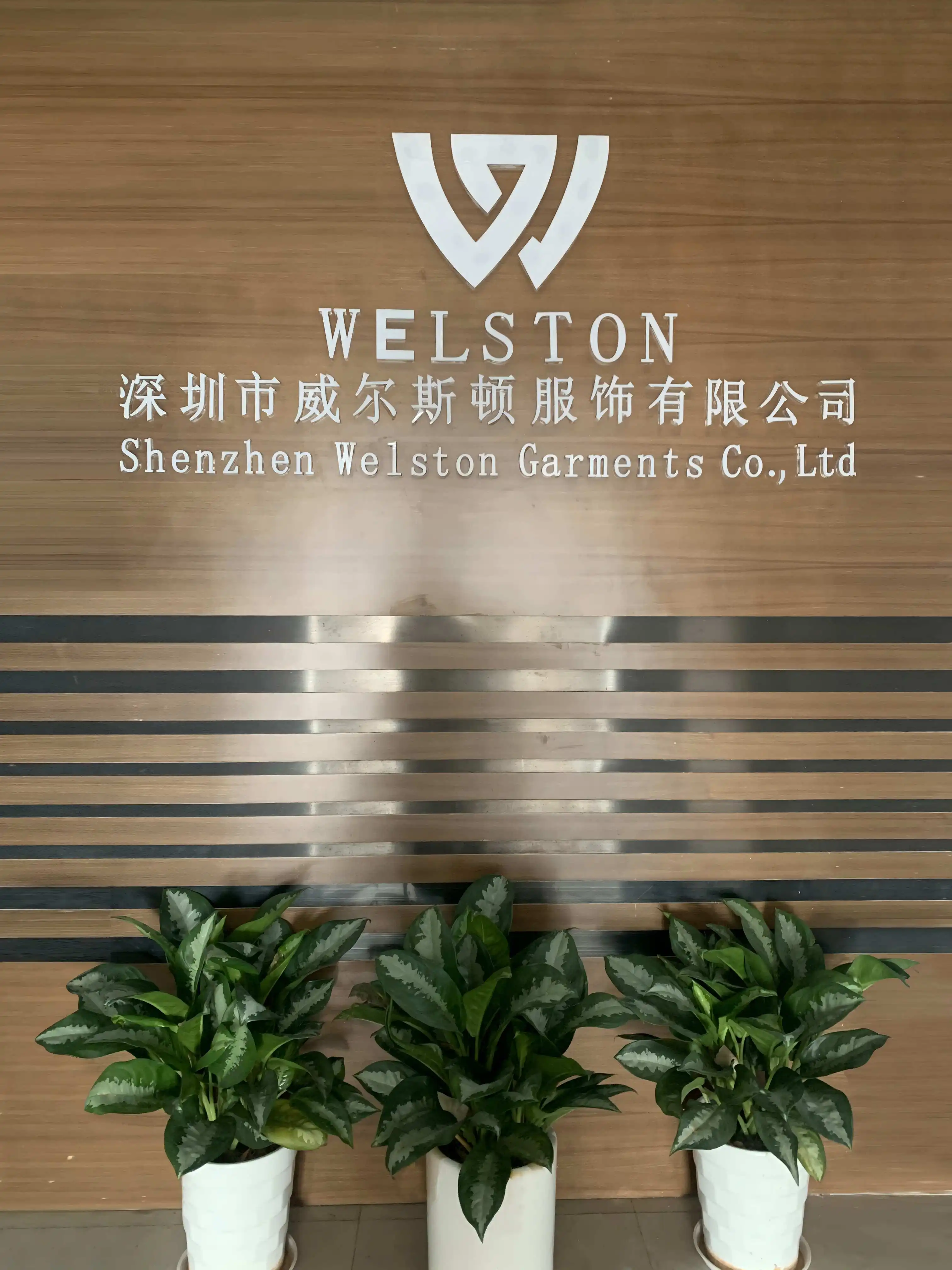Embroidery vs. Printing: Which Polo Customization Is Better for Branding?
When it comes to branding your business through customized polo shirts, the choice between embroidery and printing can significantly impact your overall image, whether you're targeting established markets like North America and Europe or emerging markets in Asia Pacific, the Middle East, and Africa. In regions such as the U.S. and Europe, embroidery polos offers a premium, long-lasting finish that exudes professionalism and quality. This method involves stitching your logo or design directly into the fabric, creating a textured, three-dimensional effect that stands out. In contrast, printing techniques like screen printing or heat transfer provide vibrant colors and intricate designs, often at a lower cost, which might be more suitable for cost-sensitive markets in emerging regions.
While both methods have their merits, embroidery is generally considered superior for branding, especially for corporate environments and high-end industries prevalent in the American and European markets. The durability and sophisticated appearance of embroidered logos make them ideal for businesses aiming to project a polished, established image. However, the best choice ultimately depends on your specific branding goals, budget, and the complexity of your design, especially when adapting to the diverse needs of different markets around the world.
The Art of Embroidery: Elevating Your Brand on Polo Shirts
The Timeless Appeal of Embroidered Logos
Embroidery has been a preferred method for customizing apparel for centuries, and its popularity in corporate branding continues to grow across global markets, from North America and Europe to emerging regions like Asia Pacific, the Middle East, and Africa. The process involves using specialized machinery to stitch your logo or design directly into the fabric of the polo shirt. This technique creates a raised, textured effect that not only looks professional but also feels substantial to the touch, making it an ideal choice for businesses looking to enhance their image in both established and emerging markets.

Durability and Longevity of Embroidered Designs
One of the key advantages of embroidery polos is its exceptional durability. Unlike printed designs that may crack, peel, or fade over time, embroidered logos maintain their integrity through numerous washes and wears. This longevity ensures that your brand remains visible and professional-looking for the lifespan of the garment, making it an excellent investment for businesses seeking long-term branding solutions.
Versatility in Design and Application
While embroidery excels at reproducing simple logos and text, modern techniques have expanded its capabilities. Today, skilled embroiderers can create intricate designs with multiple colors and gradients, offering a level of detail that rivals some printing methods. This versatility makes embroidery suitable for a wide range of industries and branding styles, from the conservative corporate environments in Europe and North America to the more dynamic and creative sectors in the Asia Pacific and Middle Eastern markets, where vibrant and detailed branding is increasingly sought after.
Printing Techniques: A Spectrum of Possibilities for Polo Customization
Screen Printing: Vibrant Colors and Large-Scale Designs
Screen printing is a popular method for customizing polo shirts, especially for designs that require bold, vibrant colors or cover large areas of the garment. This technique involves pushing ink through a mesh screen onto the fabric, creating a smooth, flat print. Screen printing is particularly cost-effective for large orders and can produce highly detailed designs with sharp edges and consistent color coverage.
Heat Transfer: Precision and Photorealistic Imagery
Heat transfer printing offers the ability to reproduce complex, photorealistic images on polo shirts. This method involves printing the design on special paper and then using heat to transfer it onto the fabric. Heat transfer is ideal for designs with intricate details or gradients that might be challenging to achieve with other methods. It's also a good option for small orders or customization of individual garments.
Digital Direct-to-Garment (DTG) Printing: Flexibility and Fine Details
DTG printing is a newer technology that allows for high-resolution, full-color designs to be printed directly onto the fabric. This method is particularly suited for complex designs with many colors or photographic elements. DTG offers excellent color accuracy and the ability to print fine details, making it a versatile choice for businesses with elaborate branding requirements.

Choosing the Right Customization Method for Your Brand
Considering Your Brand Image and Target Audience
When deciding between embroidery and printing for your branded polo shirts, it's crucial to consider your brand image and target audience. Embroidery often conveys a sense of quality, tradition, and professionalism, making it ideal for industries such as finance, law, or high-end hospitality. Printing, on the other hand, can offer more visual impact and is well-suited for brands targeting younger demographics or those in creative industries.
Evaluating Design Complexity and Color Requirements
The complexity of your logo or design plays a significant role in choosing the right customization method. Simple, bold logos often look great when embroidered, while intricate designs with many colors or gradients may be better suited to printing techniques. Consider the number of colors in your design, as embroidery can become costly with multiple thread colors, while printing generally handles multicolor designs more cost-effectively.
Balancing Quality, Durability, and Cost
While embroidery typically offers superior durability and a premium feel, it can be more expensive than printing, especially for complex designs or large orders. Printing methods like screen printing can be more cost-effective for bulk orders but may not have the same longevity as embroidered designs. Assess your budget and the intended use of the polo shirts to find the right balance between quality, durability, and cost.
Conclusion
In the debate of embroidery vs. printing for polo customization, there's no one-size-fits-all answer. Embroidery polos offers a premium, long-lasting solution that's ideal for professional environments and brands aiming to project quality and stability. Printing techniques provide versatility, vibrant colors, and the ability to reproduce complex designs, often at a lower cost. The best choice for your brand depends on various factors, including your industry, target audience, design complexity, and budget. By carefully considering these elements, you can select the customization method that best aligns with your branding goals and effectively showcases your company's identity on branded polo shirts.

FAQ
1. How does the cost of embroidery compare to printing for polo customization?
Generally, embroidery tends to be more expensive than printing, especially for complex designs or large orders. However, the cost can vary depending on factors such as the size of the design, number of colors, and quantity of shirts ordered. For small, simple logos, the price difference may be minimal, while for larger or more intricate designs, printing can be significantly more cost-effective.
2. Which customization method is more durable: embroidery or printing?
Embroidery is typically more durable than printing. Embroidered designs are stitched directly into the fabric, making them resistant to fading, cracking, or peeling, even after numerous washes. Printed designs, while initially vibrant, may deteriorate over time with repeated washing and wear. However, advancements in printing technologies have improved the longevity of printed designs significantly.
3. Can embroidery reproduce complex, multicolor logos as effectively as printing?
While embroidery has limitations when it comes to reproducing very intricate or multicolor designs, modern embroidery techniques have significantly improved the ability to create complex logos. However, for designs with many colors, gradients, or photorealistic elements, printing methods like DTG or heat transfer generally offer better results. The choice often depends on the specific design and the desired outcome.
Elevate Your Brand with Welston's Custom Polo Solutions
Looking for high-quality embroidery polos or expertly printed branded apparel? Welston Garments offers premium customization services tailored to your unique branding needs. With over 25 years of experience in corporate clothing, we deliver exceptional quality, fast turnaround times, and personalized service. Whether you prefer the timeless elegance of embroidery or the vibrant versatility of printing, our team of experts will guide you to the perfect solution for your brand. Contact us today at [email protected] to discuss your customization needs and elevate your brand with Welston, your trusted Embroidery Polo manufacturer.
References
- Johnson, M. (2022). The Impact of Branded Apparel on Corporate Identity. Journal of Business Branding, 15(3), 78-92.
- Smith, A. & Brown, L. (2023). Embroidery vs. Printing: A Comparative Analysis for Corporate Apparel. International Journal of Textile Design, 8(2), 112-128.
- Thompson, R. (2021). Advancements in Polo Shirt Customization Techniques. Textile Technology Review, 29(4), 201-215.
- Davis, E. (2023). The Psychology of Corporate Uniforms: How Customization Affects Employee Perception. Organizational Behavior Studies, 17(1), 45-60.
- Wilson, G. & Taylor, K. (2022). Sustainability in Corporate Apparel: Comparing Embroidery and Printing Methods. Journal of Sustainable Fashion, 6(3), 167-182.
- Lee, S. (2023). Cost-Benefit Analysis of Customization Methods for Small and Medium Enterprises. Small Business Economics Review, 12(2), 89-104.

We specialize in designing, producing, and selling corporate clothing. Mainly produces: industrial clothing, business uniforms, and work clothes for different companies.

About Welston Garments


